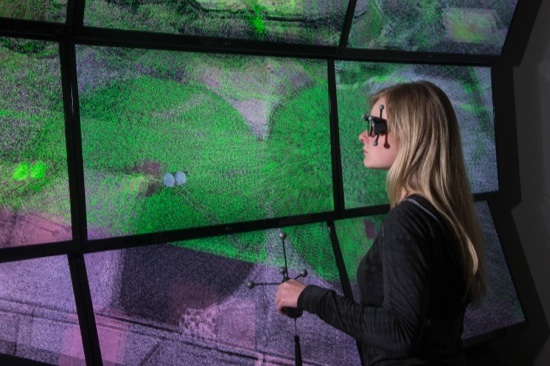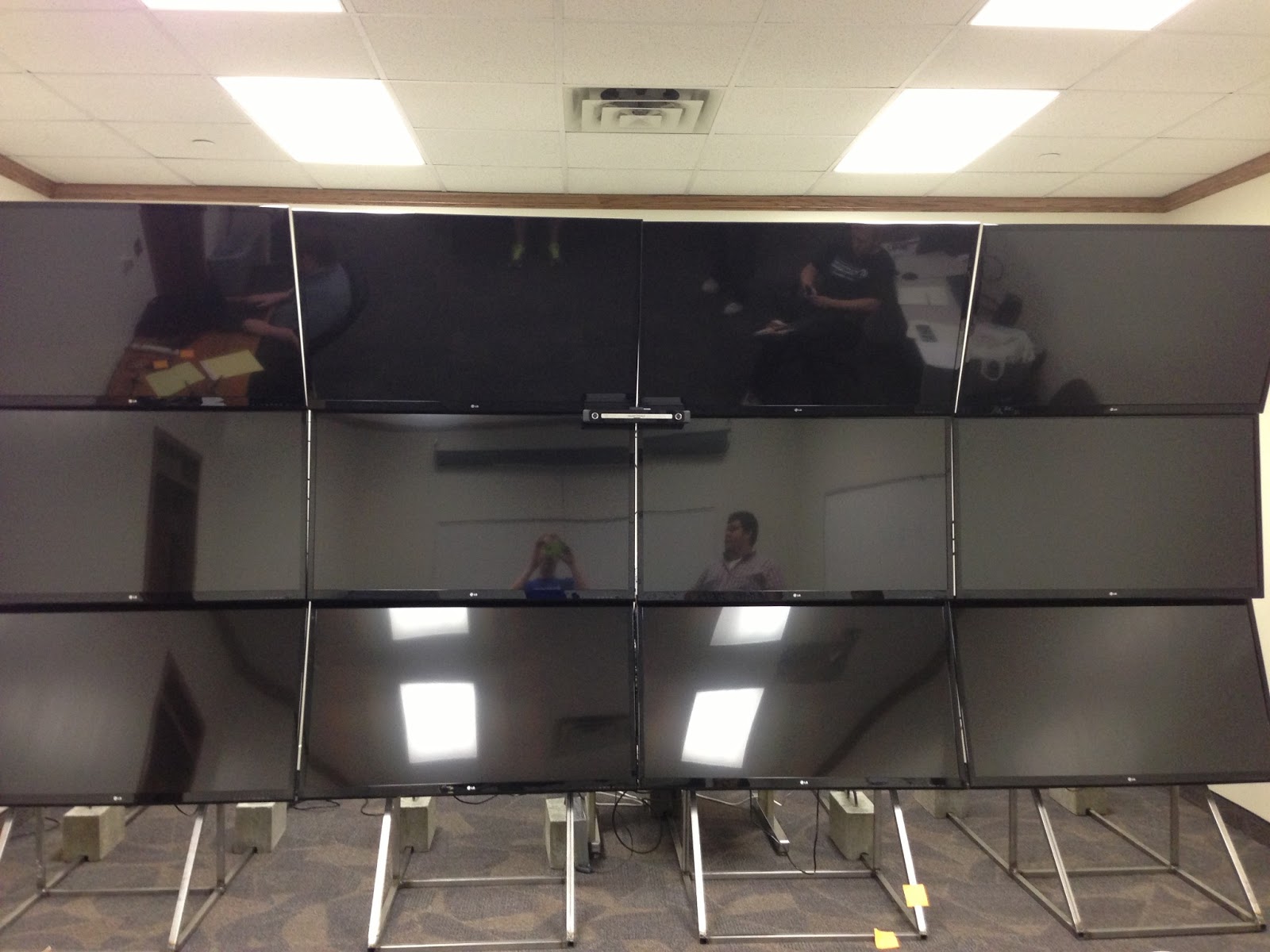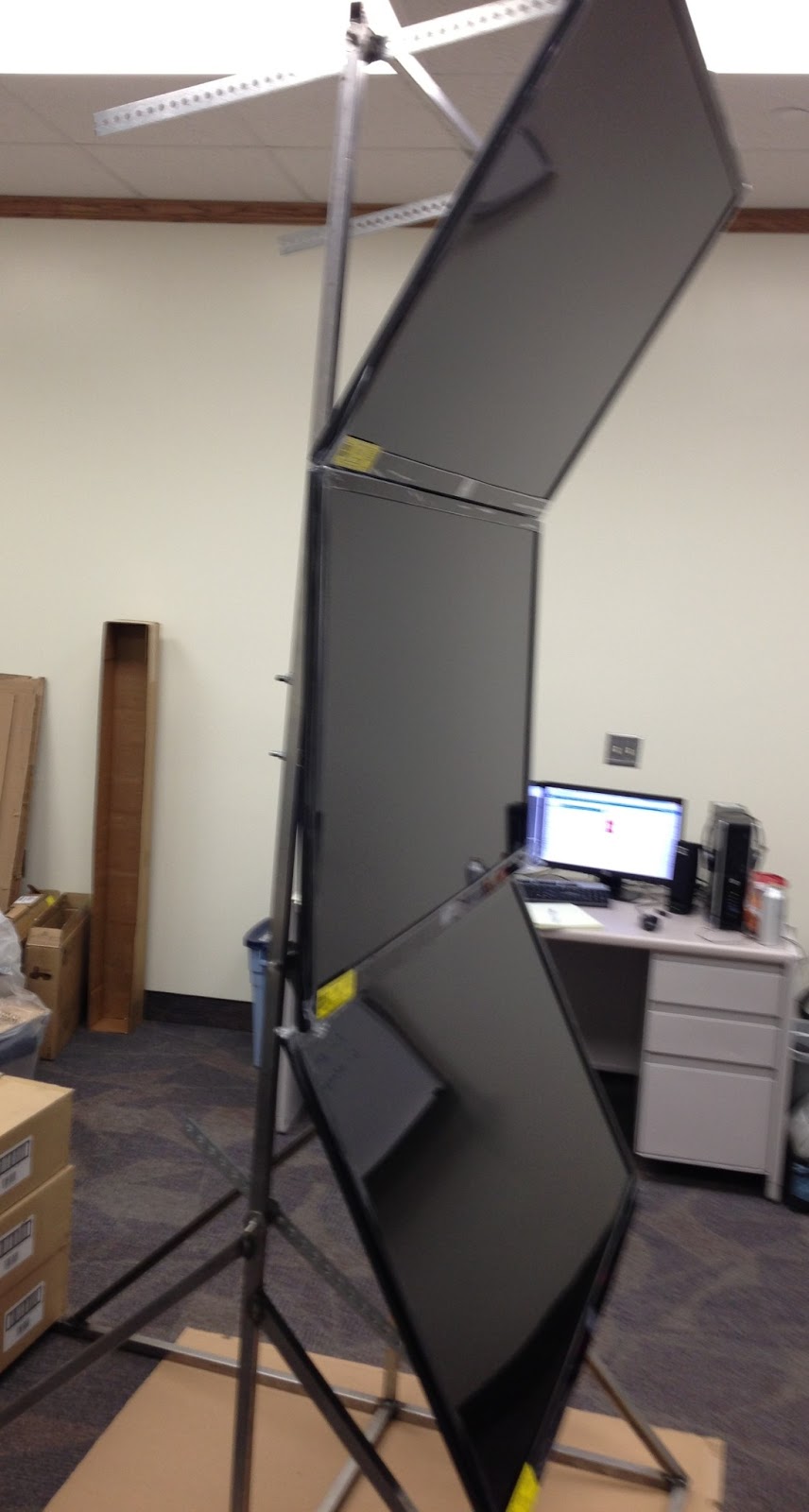
Virtual reality may be best known for its entertainment value, but its practical applications are at least as compelling. With Cave automatic virtual environments (CAVE), for instance, engineers can save time and resources by testing out products and solutions in the lab to see which are best-suited to a particular problem or site in the real world.
The only problem? Cost. CAVE environments can cost millions of dollars, putting them out of reach for many institutions. Unless, of course, they happen to use open-source software.
Enter VuePod, a CAVE that was recently built by a team led by Dr. Dan Ames at Brigham Young University using open source software. Sponsored by the university’s 
‘The Next Best Thing’
Equipped with 12 consumer-grade, passive 3D television monitors and an active tracking system, VuePod can simulate what it’s like to experience an earthquake, for example. It can also help engineers understand the effects on highways of mudslides and erosion, said Thomas Keene, a former student involved in building the unit who is now a software engineer at Armature Studio. “It’s the next best thing to actually putting your boots on the ground,” Keene told Linux.com.
No less impressive than VuePod’s capabilities was its roughly $30,000 cost, which is about a tenth of what similar setups might run, Keene said. A modular approach using off-the-shelf components and open source software is largely responsible for that. VuePod runs Ubuntu Linux 13.04 and uses VRUI — an open source C++ toolkit — to render point clouds of geographical LIDAR scans.
VRUI “handles VR rendering across multiple displays and has extensions for handling input from input devices like our IR motion tracker and Bluetooth Wiimotes via an intermediary process called VRDeviceDaemon,” Keene explained. “We picked it at the recommendation of some folks at Idaho National Laboratories, and because it met our requirements for displaying point cloud data efficiently.”
‘We Could Pop Open the Hood’
Cost was a major consideration in the team’s use of open source software, but there have been many other benefits as well, Keene pointed out. For instance, “we had a couple places where we wanted to make modifications,” he noted. “Having access to the source code meant we could pop open the hood and tweak the algorithms.” As an undergraduate student at the time, Keene also appreciated open source for making it easier for him to learn, he said.
Full details on the creation of VuePod are available on the project site and an accompanying blog. More information can also be found in the research team’s September 2014 article in the Journal of Computing in Civil Engineering. Said Ames in a recent NewScientist story, “we want whoever reads this paper to be able to build a better system than we built.”




